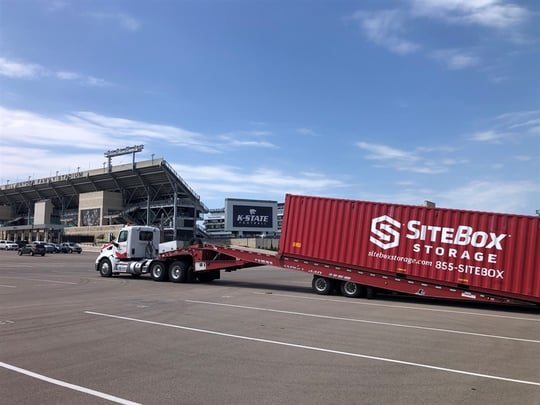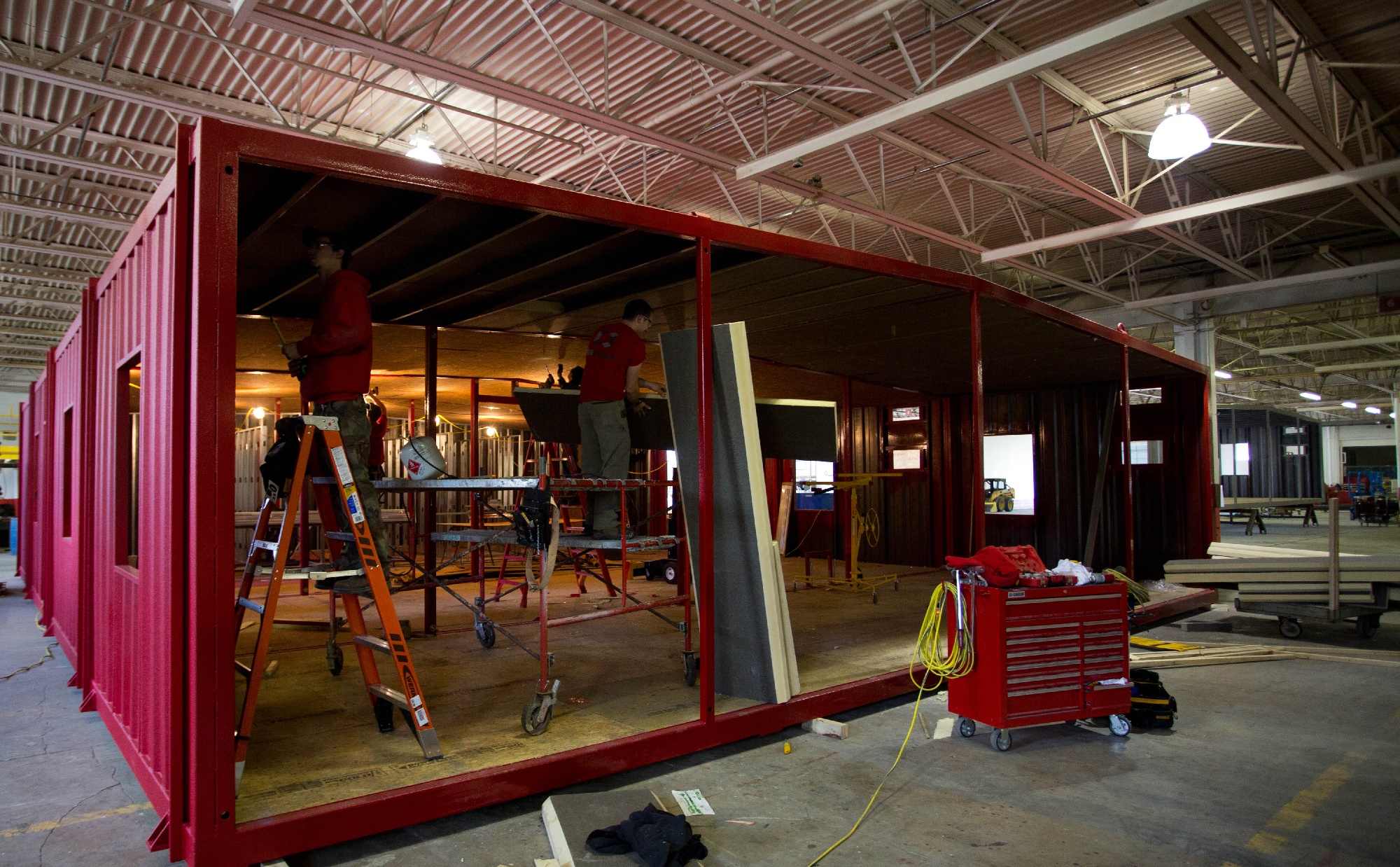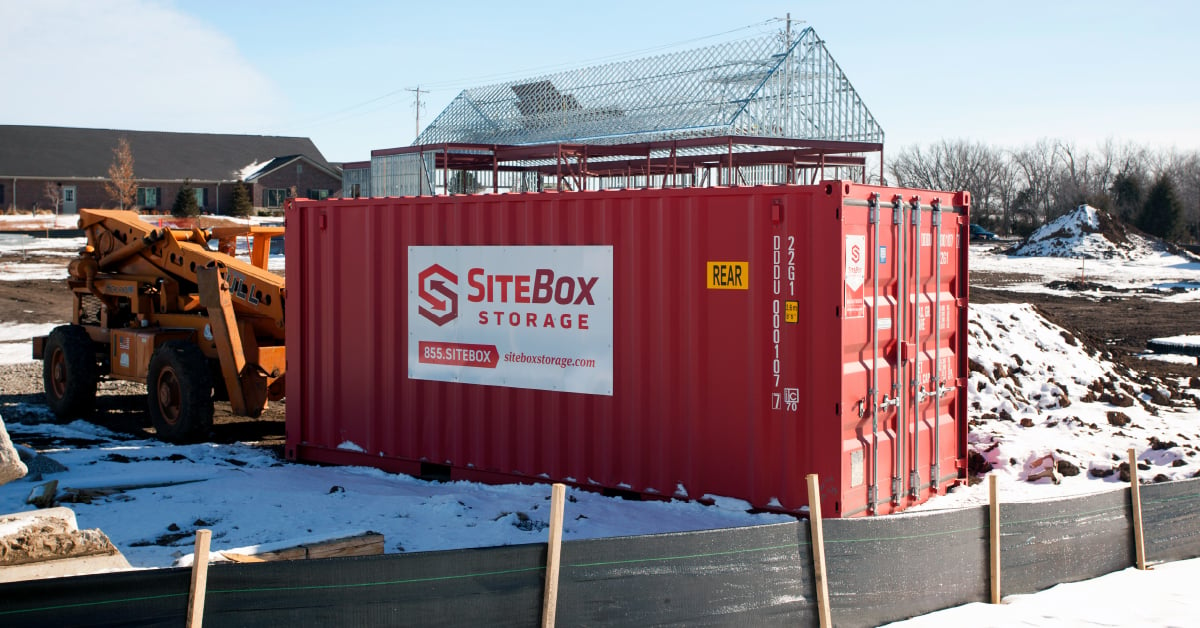The Process of BUYING A Portable Storage Container

Running out of space? Portable storage containers could be your answer. Renting works fine if you only need storage temporarily, but buying one saves you a ton of money when you need it for longer than a few months. Let's walk through what you actually need to know.
Types of Portable Storage Containers
So you start shopping and shipping containers are everywhere. Makes sense because they're basically indestructible. These steel boxes come in all sorts of sizes and colors, and you can grab them new or find a used one if you're watching your budget. They keep your furniture, tools, equipment, and basically everything else safe from bad weather and people with sticky fingers.

Now, if you're moving and need your stuff to travel with you, storage units on wheels are pretty genius. Your belongings stay in one container from start to finish, which beats the heck out of loading and unloading a dozen times. Way less back pain that way.
Then you've got specialty containers for specific situations. Maybe you need climate control because you're storing sensitive equipment. Or perhaps you want to set up a temporary office at your construction site or festival. People modify these containers in all kinds of creative ways. The steel construction is really the key here because it gives you serious security and tons of storage capacity no matter what you're doing with it.
Factors to Consider When Buying
Here's something interesting: about 72% of people buy their containers online now. Whether you're clicking around on your laptop or driving around to see suppliers in person, you need to think about the same stuff either way.
What are you actually going to use this thing for? I know it sounds obvious, but this question drives literally everything else. Storing inventory for your business is different from managing a move, which is different from setting up a portable office. Each situation needs different features and quality levels.
Location gets messy sometimes. You really need to check what your local zoning rules say before you spend any money. Some towns get pretty picky about where you can park these containers, and nobody wants to deal with fines or some official telling you to move it. Also check that your property actually has space for the delivery truck and that your ground is level enough. Trust me, a tilting container is not fun.

The condition matters a lot when it comes to price. New containers look perfect and come with warranties, but yeah, they cost more. Used containers can save you quite a bit of cash, but you have to really look them over. Check for rust, make sure the doors actually work right, and look at those seals carefully. Buying online? Ask for a million photos from every possible angle. No shame in being thorough.
Who you buy from matters more than people realize. Spend some time reading reviews and see what actual customers say about them. Companies with solid customer service will help you out when something inevitably goes sideways. Make sure you actually understand their warranty and what happens if there's a problem down the road.
Size Options and Dimensions
You've basically got three sizes to pick from, and honestly, choosing the right one is just about not paying for way more space than you'll actually use.
The 10-foot containers hold somewhere around 400 to 600 cubic feet. These work pretty well if you're a single person or small family with seasonal stuff, some tools, or maybe what you'd find in a one-bedroom apartment. They're compact enough to squeeze into tighter spots on your property, which is nice.
Most people end up going with the 20-footers. You get about 1,000 to 1,200 cubic feet, which handles what you'd have in a two or three-bedroom house. Businesses like these too because they're good for storing inventory or setting up as temporary offices at construction sites. If you're on the fence about size, this one's usually a safe pick.
The 40-foot containers are the monsters at around 2,400 cubic feet. We're talking about storing an entire house worth of furniture or major commercial inventory. If you're a business doing a big move or you need serious storage on site, this is probably what you want.

Now here's a little detail that actually matters: standard containers measure 8 feet wide by 8.5 feet tall. But high cube versions give you an extra foot up top at 9.5 feet total. That extra height really helps when you're stacking boxes or if you've got tall furniture. My suggestion? Write down what you're planning to store and ballpark the space it takes. Just don't pack stuff all the way to the ceiling because you'll want to actually get to things without everything collapsing on you.
Cost and Budgeting
Alright, let's talk actual numbers. You're probably looking at $1,800 to $3,500 on average, but that can move around quite a bit depending on what you're getting.
The condition is huge for price. New containers cost more, but you get that warranty and everything's pristine. Used containers definitely save you money, but then you really have to inspect them carefully. Check the steel, look at the doors, examine those seals. All of it affects what you'll pay. Size is pretty straightforward, right? A 10-footer costs less than a 40-footer. High cube containers run a little more than standard height because there's extra material and more space inside.
Basic containers keep your stuff dry and secure, which honestly covers most people's needs. But maybe you want climate control or built-in shelving, or you're thinking about converting it into an office. All those extras add up fast. Try to separate what you actually need from what just sounds cool to have.
Delivery catches people off guard sometimes. Some companies roll it into the total price, but others tack on fees based on how far they're driving and how complicated your property is. Ask them straight up: are you just dropping it off, or will you position it exactly where I want it? Also think about ground prep and permits because those aren't free either.
Where you live changes the price too. A container in Salt Lake City might cost different from one in a coastal city. Supply and demand does its thing. But here's something worth knowing: 68% of businesses that got portable storage said it made their operations run smoother. So yeah, it's money upfront, but most people actually see it pay off.
Delivery and Placement Considerations
Getting your container delivered without any drama starts with preparing the site properly. The ground has to be level and solid. You really don't want your container slowly sinking or tilting as time goes on. Gravel or concrete pads work best because they drain well and keep everything stable over the long haul.

Before delivery day rolls around, check whether the truck can actually reach where you want the container. These trucks are massive. They typically need at least 14 feet of width and 45 to 60 feet of length just to turn around and maneuver. Walk your driveway, measure your gate openings, and look up for any tree branches or power lines that might get in the way.
You definitely want someone home when the container shows up. You need to tell the driver exactly where to put it because moving these things after they're placed requires bringing in special equipment. Seriously, get the placement right the first time and save yourself the headache later.
One of the coolest things about these containers is how well they work for moves. The container shows up at your current house, you load everything at whatever pace works for you, they drive it to your new place, and you unload on your own schedule. Compare that to the nightmare of packing everything into a moving truck, driving it yourself, and then racing to unload before you have to return the truck. Way less stressful this way.
Features and Customization Options
Modern containers have way more going on than you might expect. Security-wise, even basic containers come with lockbox protectors that shield your padlock from bolt cutters. But if you want to go further, you can add advanced locks, alarm systems, or even cameras. Some people get really into securing their containers, and honestly, if you're storing valuable stuff, it makes sense.

Weather protection is already built in with seals that block rain and snow, plus ventilation systems that stop condensation from ruining your furniture or boxes. Storing something that needs specific temperature or humidity? Climate control is totally an option, just costs extra.
Inside, you can set up shelving, add lighting, and upgrade the flooring. It actually changes everything when you're trying to stay organized instead of just tossing boxes in randomly and hoping for the best. Outside, you can paint the container to match your property or throw in some windows if you're turning it into an office. People even hook up electricity and plumbing to make them into actual workspaces.
The main thing is to think about what you genuinely need versus what just sounds cool. Those extra features add up quick, and there's no point spending money on stuff you won't really use.
Security Features for Portable Containers
The container itself is your first layer of protection, and it's pretty solid. These steel boxes crossed oceans carrying cargo, so they're legitimately tough. The steel walls don't cut or pry easily, and the doors lock in multiple spots. When you're shopping around, look for containers with reinforced frames that someone can't just pop off.
Your lock choice really matters. Basic padlocks are fine, I guess, but lockboxes do way better. They're these steel covers that go around the lock and stop thieves from getting at it with bolt cutters. Want even more security? High-security disc locks and smart locks that track access from your phone are available. Some people go all out and add multiple locks, which isn't a bad idea if you're storing expensive equipment.

Surveillance adds another layer. Motion lights make your container way less attractive to anyone thinking about messing with it. Security cameras that you can check from your phone give you peace of mind, and alarms that go off when someone tries to break in are pretty effective too.
Location matters more than you'd think. Putting your container in a well-lit, visible spot naturally makes it safer than tucking it away somewhere dark. If you're at a construction site or some temporary spot like a festival, think about how secure that whole area is. All these security measures together protect your equipment, tools, and belongings, and honestly, the peace of mind is worth it.
Rental vs. Purchase: Pros and Cons
The rent versus buy question really boils down to your timeline. Need storage for over a year? Buying probably makes more sense because those monthly rental fees just keep piling up. When you own the container, you can do whatever you want with it, keep it as long as you need, and sell it later to get back some of your money. Businesses that need permanent storage on site or portable offices usually find buying works out better financially.
The catch is you're putting down $1,800 to $3,500 or more right away, and then you're the one dealing with delivery and keeping it maintained. Renting works well when you're in a short-term situation like moving or doing renovations. Actually, rentals have gone up 45% over the last three years because more people are discovering how convenient they are. You pay less upfront and the rental company takes care of the logistics, plus you can swap to a different size if your needs change.
But renting gets pricey if you keep the container for a long time. You also can't really modify a rental much, and sometimes there are limits on how long you can keep it. Some companies do rent-to-own deals where you start renting to test it out, and if you decide to keep it, those rental payments go toward buying it. That's actually pretty smart.
Quick version: moving for two or three months? Rent it. Need permanent storage for your business? Buy it. The fact that over 1.2 million containers will get rented across the country in 2025 shows that both options work fine, just depends on your situation.
Maintenance Tips for Storage Containers
Look, taking care of your container isn't complicated, but you do need to pay attention. Skip maintenance and small problems turn into expensive disasters pretty quick. Walk around your container once a month and check for rust spots, make sure the doors are still aligned right, and look at how the seals are holding up. Catching rust when it's just starting means you can deal with it before it spreads and becomes a real structural problem.
Rust control is super important if you live somewhere like Salt Lake City where they dump road salt everywhere in winter. Clean the outside of your container regularly and hit any bare metal with rust-inhibiting primer as soon as you spot it. Don't wait on that. The door seals need attention too because they're what actually keep water and bugs out of your container. Check them once a year and swap them out if they're cracked or squished. Clean them now and then so dirt doesn't stop them from closing properly.

Inside, just keep the floor clean and use pallets or shelving to keep your stuff off the ground. Good airflow stops condensation from building up and wrecking your furniture and boxes. Seal up any gaps you find to keep pests out, and don't let junk pile up around the outside because that's like putting out a welcome sign for rodents and bugs. Also keep tabs on the foundation to make sure the ground is staying level and water isn't collecting underneath, which will rust out the bottom over time.
Most people spend maybe an hour every few months on this stuff, and it keeps the container in solid shape for years. Not much effort for a pretty big payoff.
Frequently Asked Questions (FAQs)
What sizes are available? You've got three main choices: 10, 20, or 40 feet long. Standard ones are 8 feet wide and about 8.5 feet tall. High cube models give you an extra foot on top. Most people go with the 20-footer.
How much does it cost? Plan on $1,800 to $3,500, give or take. New ones cost more but you get warranties. Used containers save money but you really need to look them over carefully. Remember to add in delivery, ground prep, and any permits you might need.
Where can I buy one? You can buy from specialized suppliers, online marketplaces, or local dealers. Something like 72% of people shop online now. Take a look at SiteBox Storage if you want to see what's out there.
Can I rent instead? Yeah, absolutely. Renting works great when you only need storage temporarily. How much it costs depends on the size, how long you keep it, and where you live. Some places will even let you do rent-to-own.
What are the benefits? Having storage right on your property is huge. No more driving across town to some storage place. They're secure with the steel construction and good locks, they handle weather really well, and you can use them for tons of different things. Usually cheaper than regular storage units too, especially long term.
How do I choose the right size? Write down what you're planning to store and estimate the space. A 10-footer holds about one bedroom worth of stuff. A 20-footer handles two or three bedrooms. A 40-footer can fit a whole house or major business inventory. If you're not sure, go a little bigger. Not that much more money and you won't be kicking yourself later.
Are they weatherproof? Yep. The steel construction plus door seals keep rain and snow out. Just take care of those seals and you're good. These things were made to cross oceans on cargo ships, so your local weather isn't going to phase them.
What features matter most? Look for solid structure without much rust. Doors should work smoothly. Seals need to be in good shape. Get quality locks or lockboxes. Floor should be level with no damage. You want decent ventilation to stop moisture buildup. Get the size that actually fits your needs, then add things like shelves or lights if they'll genuinely help.
How long can I keep a rental? That depends totally on what you work out with the company. Most do month-to-month or you can commit to longer. Some let you keep it basically forever. Just talk about your timeline before you sign anything. If you think you'll need it for a while, do the math on rental costs versus just buying one.
What companies sell them? Tons of options. National companies, regional dealers, online sellers. Read reviews before you buy from anyone. Look for companies that have solid customer service and policies that actually make sense. SiteBox Storage has different sizes if you want to check them out. Don't just pick whoever's cheapest because sometimes paying a bit more for a good company is totally worth it.
Conclusion
So that's pretty much everything you need to know about buying a portable storage container. Once you break it down, it's actually pretty straightforward. Figure out what type makes sense for you, pick the right size, set a budget that's realistic, and plan out the delivery and maintenance stuff.
These containers keep getting more popular because they just work. They're convenient, they keep your stuff secure, and they protect your belongings from weather. Whether you're dealing with a move, need business storage, or want to set up a portable office, they adapt to whatever you're trying to do.
Just make sure you research the suppliers, look containers over carefully (especially used ones), and know what everything's going to cost before you commit. Do it right and your container will handle your storage needs for years without giving you problems.
Got questions? Want to see what's available? Check out SiteBox Storage's selection and find something that works for your situation.
Thank you for reading our guide on buying a portable storage container. If you have any questions or need further assistance, don't hesitate to contact us at SiteBox Storage. We’re here to help you find the perfect storage solution. You can start by looking at our portable storage containers for sale.

